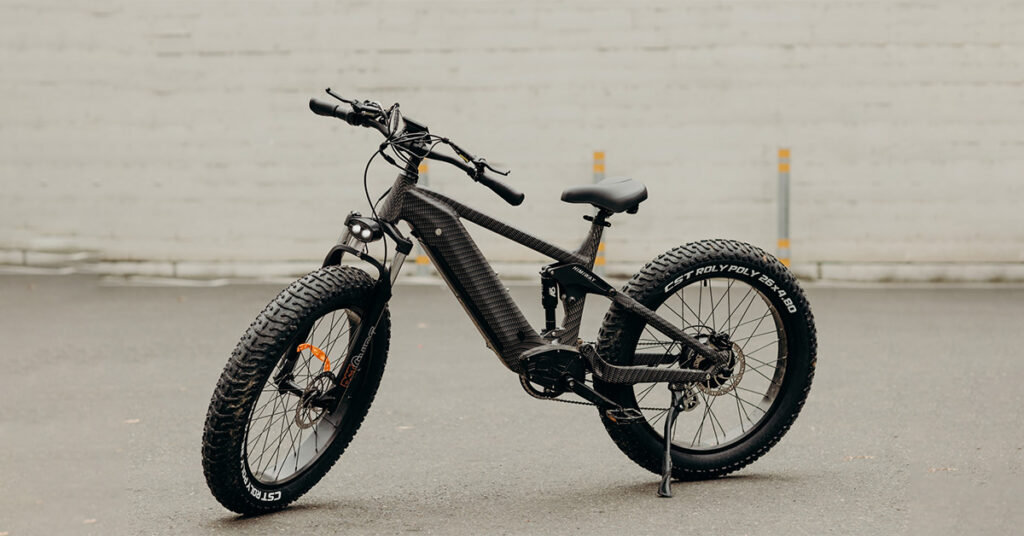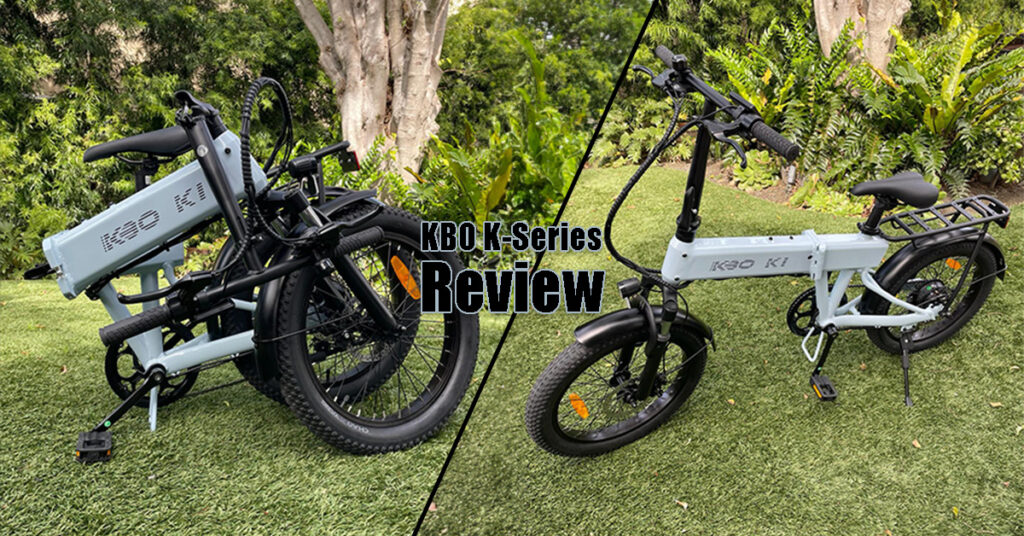If you are considering purchasing an electric bike, you may wonder do electric bikes have a weight limit for riders.
The short answer is: Yes, all electric bikes do have a weight limit to ensure the e-bike work as intended without safety issues. On average, the weight limit of an ebike is between 200 and 400 pounds (90-180 kg).
In this blog post, we will explore why electric bikes have a weight limit and what factors can impact their weight capacity.
How Much Weight Can Electric Bikes Carry?
Electric bikes come in different sizes and weight capacities. However, the amount of weight capacity they carry depends on factors such as the frame, suspension system, battery capacity, motor power, and model.
But ideally, most standard electric bikes, including commuter e-bikes, can carry a maximum load of between 200 to 350 pounds (90 to 160 kg), including the rider’s weight and other bike components.
Cargo e-bikes, on the other hand, are specially designed bikes capable of carrying heavier loads and bulky cargo than commuter e-bikes. Most have a longer wheelbase with a large cargo carrier (front or rear rack), panniers, and sturdy frames to support the extra weight.

Cargo electric bikes typically have a weight capacity of about 440 pounds (200 kg) or more, depending on the design and model.
Fat tire bikes have a maximum weight capacity ranging from 250 to 350 pounds (113 to 159 kg), with some high-end models having higher weight capacities.
Why E-Bikes Have Different Weight Limits?
Electric bikes have different weight limits because of their design, intention of use, and number of installed components.
A cargo e-bike, for example, is designed to carry cargo. An ordinary or commuter e-bike is designed for faster commuting, hence limited weight capacity.
Here are the three most crucial factors affecting the weight capacities of an electric bike.
- Motor power: Most electric bikes with powerful motors have higher weight capacities and can carry heavier loads than those with less powerful motors.
- Frame: Electric bikes with high-quality frames and durable components handle more weight than lower-quality/entry-level ones.
- Battery Capacity: The more power the battery can deliver, the more weight the bike can support.
How to Find a Weight Limit On a Specific E-Bike?
Ordinarily, an electric bike will come with a user manual after purchasing it from a reliable bike store. The user manual includes information such as the bike’s assembly & maintenance instructions, features, components, and operation.
To find the weight limit on a specific e-bike, you can scroll the manual up to a page indicating the weight limit. You might have to check with the manufacturer’s website if you do not have the user manual.
The last alternative to find the weight limit would be contacting the seller or manufacturer directly to get the precise weight limit.
What Happens if You Overload an EBike?
Overloading an e-bike can compromise its stability and performance or cause damage to its components. So, you must always choose the precise e-bike with the correct weight limit to accommodate your needs and guarantee safety.
Here are four common problems you will encounter if you overload an electric bike.
- Altered stability: When an e-bike carries too much weight, it may become unstable and difficult to control, especially when riding at higher speeds or on uneven terrain. Eventually, it increases the risk of injury or accidents.
- Reduced performance: When you overload an electric bike, the motor and battery overwork, reducing its range, speed, and power. Later, the reduced performance will shorten the lifespan of the battery and other bike components.
- Increased wear and tear: When an e-bike carries too much weight, most components, including the frame, wheels, and suspensions, undergo stress. Later, the effects cause premature wear & tear, resulting in costly repairs.
- Safety hazards: Overloading an e-bike increases the risk of mechanical failure to particular bike components, including the suspensions. Note that when certain parts fail, they will result in unforeseen accidents. Also, handling an overloaded e-bike can also be challenging on loose or wet terrain.
Are Electric Bikes Good for Heavy Riders?
Yes, electric bikes are an excellent choice for heavy riders. Most of them have a specific maximum weight capacity, accommodating the weight of heavy riders.

High-end e-bikes can support up to 330 pounds (150 kg) or more, accommodating riders of all sizes. Moreover, the motor in electric bikes provides enough pedaling assistance, making cycling smooth for heavy riders whenever they are tackling a steep incline or covering long distances.
Here are other reasons why electric bikes can be a good choice for heavy riders:
- Comfortable riding position: Most e-bikes accommodate comfortable and upright riding positions. So, riders will not feel back, neck, or shoulder strain when riding longer distances on an electric bike.
- Fat tires: Some e-bikes have wider/fat tires that provide better stability and traction for heavier riders, reducing the risk of accidents.
How to Choose an E-Bike for Heavy Riders?
You must consider a few crucial factors when choosing a safe, comfortable, and reliable bike for heavy riders.
We suggest reading our complete guide on how to choose an ebike but here are four factors to look at when choosing an e-bike for a heavy rider:
Frame
A bike with a strong and sturdy frame guarantees support for your weight. When purchasing an e-bike, look for frames made from durable materials like aluminum or steel. Alternatively, look for a material like titanium that does not bend or flex.
Carbon fiber, on the contrary, can be lightweight and the perfect choice for commuter e-bikes.
Tires and Wheels
Electric bikes with fat or wide tires provide more stability and better weight distribution.
For instance, a 2.5-inch wide tire is better than a 1.5-inch or 2-inch tire because it distributes the rider’s weight more evenly. In addition, wider tires improve handling and reduce the risk of punctures.
Lastly, e-bikes with wider tires guarantee better traction and shock absorption.
Brakes
Always choose an e-bike with efficient braking systems because heavy riders require stronger brakes when slowing down or stopping.
Hydraulic disc brakes, in this case, are the best choice to consider because they provide reliable and consistent braking performance, even in wet or muddy conditions.
But if the e-bike is not using the hydraulic disk braking system, mechanical discs would also work well if they are well adjusted.
Suspension System
A reliable suspension system will help to absorb shock and reduce how you feel the impacts of bumps on rough terrain. Also, it’s essential to choose a suspension system that is well-suited for the type of riding you plan to do.
Here are some of the best heavy riders suspensions worth checking out:
- Dual suspension: These are the best options for heavy riders who plan to do a lot of off-road riding. They provide better traction and control on rough terrain.
- Air suspension: They are lightweight options that can be adjusted to suit a rider’s weight and riding style.
- Coil suspension: They are generally more durable than air suspension systems and can handle heavier loads.
Final Words on E-Bike Weight Limit
In conclusion, it is important to pay attention to the weight limit of an electric bike, especially if you are a heavy rider.
The precise weight limit in an e-bike will ensure that you’re getting the right e-bike that meets your needs, providing a comfortable and enjoyable riding experience. If you choose the correct e-bike that can handle your weight, you are also guaranteed the safety and longevity of the bike.
Before purchasing an e-bike, it would be best to refer to the manufacturer’s specifications or consult with a professional bike shop for the best experience.
A freelance writer and copywriter.




